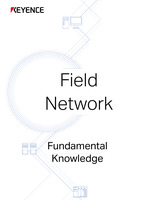FOUNDATION Fieldbus
This section explains FOUNDATION Fieldbus.
Overview
FOUNDATION Fieldbus is an open network developed by an American organization, Fieldbus Foundation™. (In Japan, it is promoted by Fieldbus Foundation Japan.) It was developed to support two-way signal communication and multidrop connection using multiple devices in place of analog signal communication (4 to 20 mA) which was a mainstream method in the 1990s. FOUNDATION Fieldbus performs communication using two-wire field buses (H1) and integrates them into a single bus (H2).
Wiring Method and Communication Protocol
Wiring method
Up to 31 devices can be communicated using two-wire low-speed buses with a transmission rate of 31.25 kbps. These low-speed buses are called H1s. A system is built by connecting multiple master devices that communicate using H1s to a high-speed bus called H2. H2 has a transmission rate of 1 Mbps or 2.5 Mbps. Recently, an increasing number of networks use High Speed Ethernet (HSE) that communicates at 100 Mbps in place of H2.

Communication protocol
H1 communication uses the master/slave method. In an H1 network, the link master device is equipped with the link active scheduler (LAS) function and this master device controls which data is sent to which device in what order. Communication is performed in a fixed cycle in the order with which the network was designed. However, communication timing is also managed using tokens, which allows for communication at arbitrary timing.
Characteristics
In H1 communication of FOUNDATION Fieldbus, the link master controls communication timing in the network, allowing for the execution timing of each slave to be synchronized. Function blocks (FBs) are used for control, so it is necessary to configure a network using FBs for the link master device.
Related Networks
HSE
This network links master devices in an H1 network of FOUNDATION Fieldbus.
- Company, product, and network names mentioned on this page are either trademarks or registered trademarks of their respective companies.
- Note that some information, such as applicable standards and specifications, may have changed since this page was published.
November 2015





